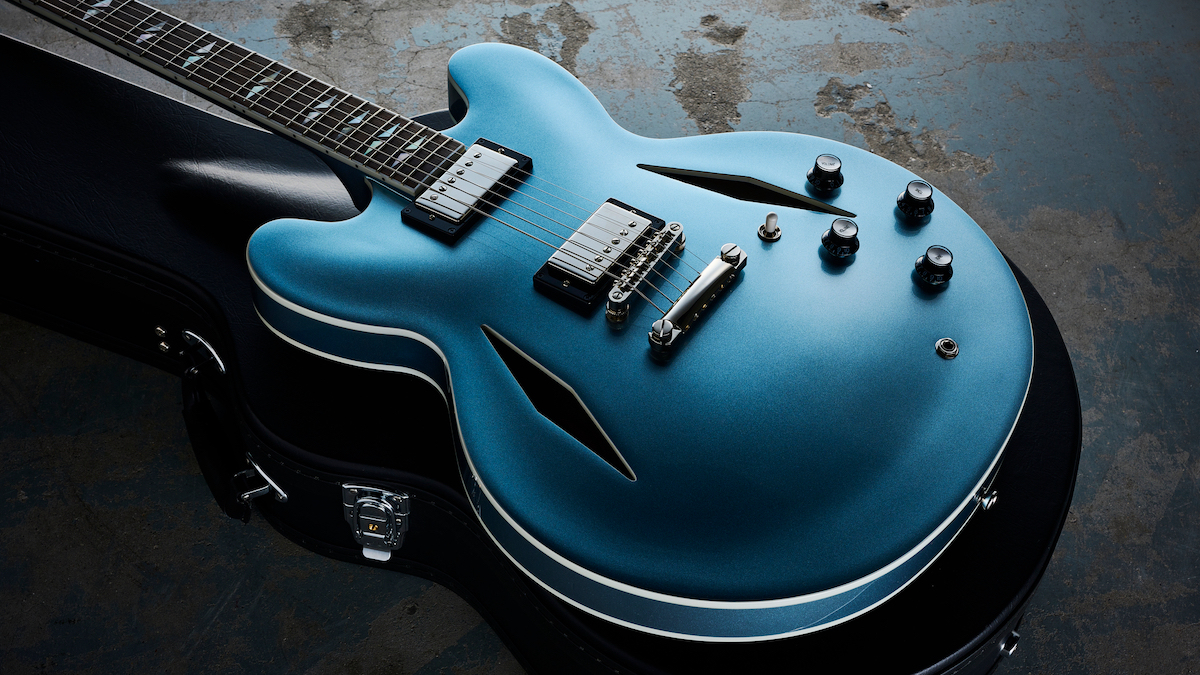
At this year’s NAMM Show, Epiphone lifted the lid on one of its most anticipated (and worst-kept secret) releases in years: the Epiphone Dave Grohl DG-335. Finally, an affordable signature version of the Foo Fighters frontman’s on-stage guitar, complete with all the Grohlmarks - Diamond F-holes, 6-in-line headstock, Pelham Blue finish and more.
Grohl himself let the cat out of the bag early, using the guitar at Austin City Limits in October 2023 on All My Life, The Pretender, No Son of Mine, Learn to Fly, Rescued and Walk.
Even better news is that unlike some NAMM releases, we didn’t have to wait long for it to arrive. We have one, and here are our first impressions. But first, a little history…
The history
Foo Fighters have been through multiple evolutions with their sound, from the rawer, post-grunge of the all-Grohl debut album, all the way to the stadium-filling anthems we hear today. But while the guitars in the videos and played on stage might have changed, there’s one constant at the heart of the Foo Fighters’ guitar sound: Grohl’s 1967 Gibson ES-335 Trini Lopez, which he’s used to track guitar parts on every album Foo Fighters have recorded.
“This guitar, I’ve made every single Foo Fighters record with.” Grohl told NME in 2011, “This is a fucking beautiful guitar. I saw this in a guitar shop in Bethesda, Maryland, I think it was 1992 or ’93 or something like that. I think I was still in Nirvana when I bought it. I thought it was unusual, it looks like a Gibson ES-335, except it has diamond-shaped f-holes and it has this different headstock on it.
“I didn’t really know anything about Trini Lopez, the artist, when I bought it, but this fucking thing… this is the sound of the Foo Fighters, this guitar. On every record I might use other guitars every now and then, but for the most part it’s just this.”
Gibson produced two signature models for the If I Had A Hammer singer - the Standard and Deluxe. Grohl’s guitar is a Trini Lopez Standard based on the ES-335, while the Deluxe model was fully hollow, with a bigger body, wider cutaways and pointed horns, and both featured the diamond F-holes, split-diamond inlays and 6-in-line headstock.
But, to paraphrase a song Grohl provided the drums for (and appeared in the video for as Satan), the Epiphone DG-335 isn’t actually based on this guitar. Not entirely, anyway. You’re probably more than used to seeing Grohl and his Gibson signature model on stage, given that he’s played it almost exclusively since its introduction in 2007, and it’s this guitar that the Epiphone DG-335 is paying tribute to.
Grohl’s Pelham Blue version is the most recognisable, and was released as a limited run of 200 in 2007 alongside a black version. Gibson released a further 200 in 2014 alongside 400 in Gold Metallic. But regardless of which colour you prefer, the biggest obstacle is price, followed quickly by getting your hands on one. Which brings us neatly up to date.
Our first impressions
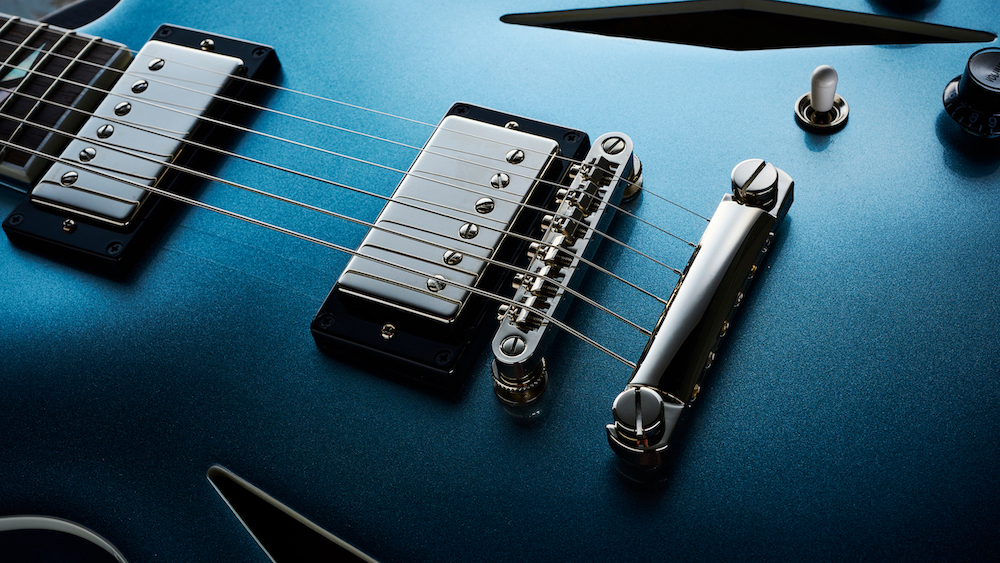
We love: The overall approach
Grohl’s Gibson has become very familiar, and this Epiphone version presents us with an uncanny sight as we open the case. A glance at the Epiphone’s spec sheet shows that it’s pretty close to the Gibson in design. It shares the one-piece mahogany neck, laminated maple body and the correct diamond-shaped F-holes, six-in-line headstock and split-diamond inlays. Epiphone has even loaded the affordable DG-335 with Gibson USA pickups, with a Burstbucker 2 in the neck position and Burstbucker 3 in the bridge.
The Pelham Blue finish looks great, and at a glance it’s quite surreal. But this guitar will set you back around £/€/$1,200, so we don’t have any concessions to make when it comes to the presentation.
Thankfully, neither does Epiphone. Everything is finished neatly, from the binding on the F-holes, body and neck to the flawless, uniform paint job. There’s no visible defects, and as with the many Epiphones we’ve had pass through our door in the last couple of years, it’s yet further proof that the head honchos at Gibson have put the effort in when it comes to turning the tide on previous QC-related reputations.
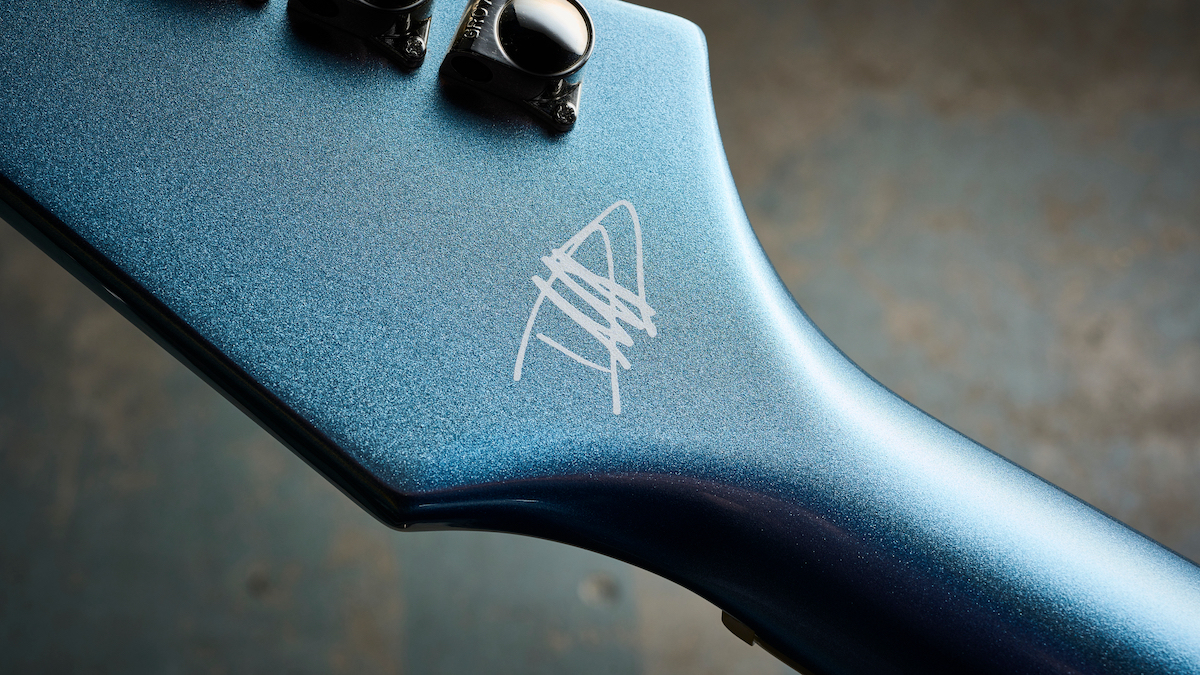
We love: The neck profile
The first and most distinctive thing you’ll notice playing-wise about the DG is the feel of the neck. Epiphone describes it an Elliptical C, which is a pretty fair description. This isn’t yet another Slim Taper slapped onto a body with a custom finish, it feels ‘designed’ and the result is a fairly clubby, but not overly-fat palm-filler.
Grohl is known for his rhythm work, along with occasionally taking flight for some lead playing, and this definitely feels comfortable for both. Grohl’s no stranger to some awkward shapes, but there’s no fatigue here, with plenty of surface area adding some relief. Talking of relief, our review models comes nicely set up, too. The action is on the lower side of medium which makes for easier fretting without any choke.
Neck shapes are, of course, entirely subjective, but if your playing style leans more towards the rhythm side of things we think you’ll get on well. It’s worth noting that due to the lighter semi-hollow body, there is a bit of a lean when playing it standing with a strap.
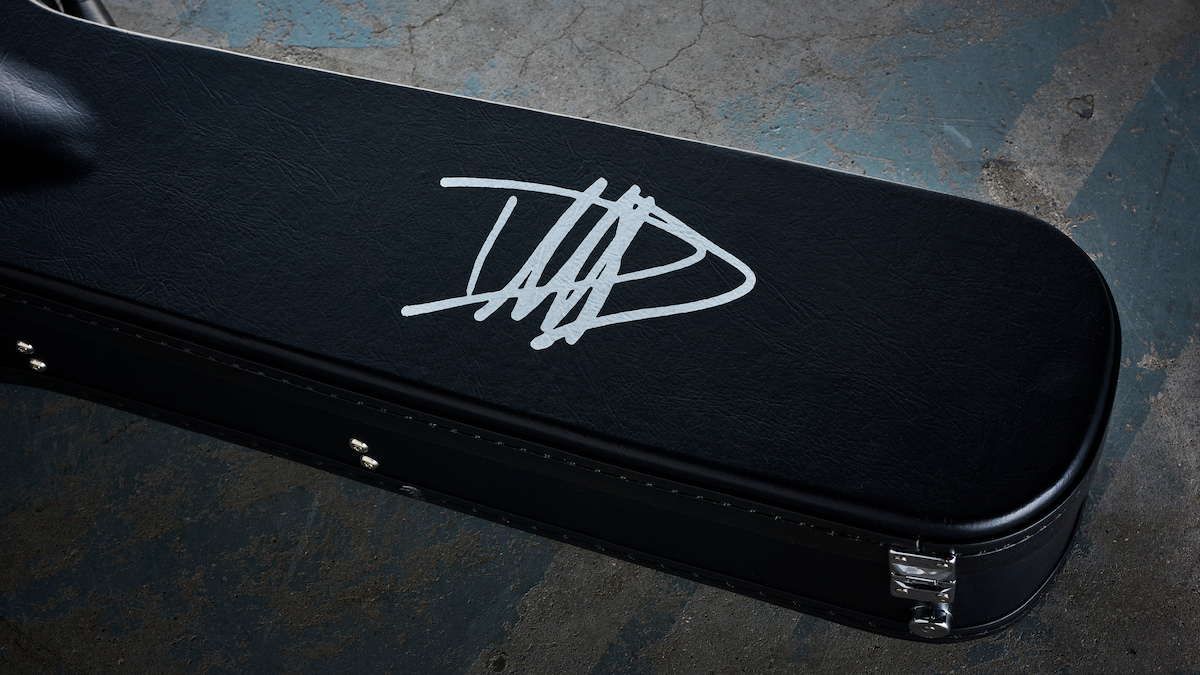
We don’t love: Where’s the case candy?
The DG-335 ships in an Epiphone-branded hardshell case, which is also adorned with Grohl’s signature. This is a good thing for completists, not so good if you intend to carry the guitar around without advertising what’s inside, as that sprayed-on signature isn’t exactly subtle.
Our next stop is the accessory compartment inside the case as we’re eager to check out what candy is included. Foo Fighters picks? Prints of the guitar? A signature black t-shirt and some chewing gum?! Nope, just some keys, warranty information and a pack of silica gel (dry). In its defense, Epiphone doesn’t mention any extras either, but we like treats. Still, we aren’t left disappointed for long…
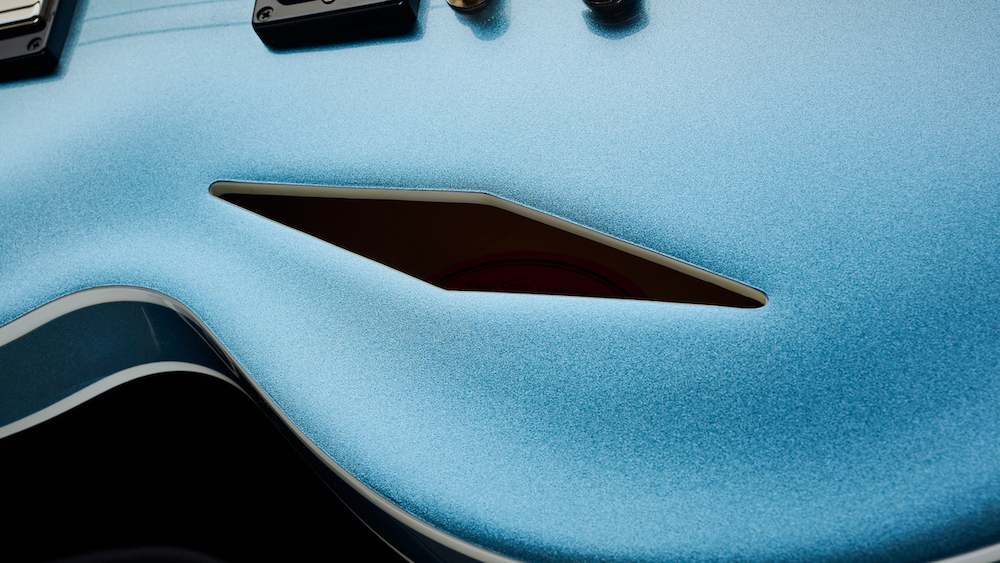
We love: The visuals
When you think of ‘alternative’ guitars, the ES-335 isn’t likely to be high on the list. In fact, the big-body semi-hollow model screams ‘tradition’ thanks to the era it was introduced and the music that it’s associated with. But, thanks to Grohl’s adoption of Trini Lopez design points, paired with a less fussy tailpiece arrangement, the DG-335 puts a slightly leftfield slant on the format.
The diamond-shaped f-holes lend a more modern feel to the visuals, but in our opinion the tamed non-reverse Firebird-style headstock really helps remove some of that traditional look. The fingerboard inlays are the icing on the cake, offering another touch of higher-end class to the guitar.
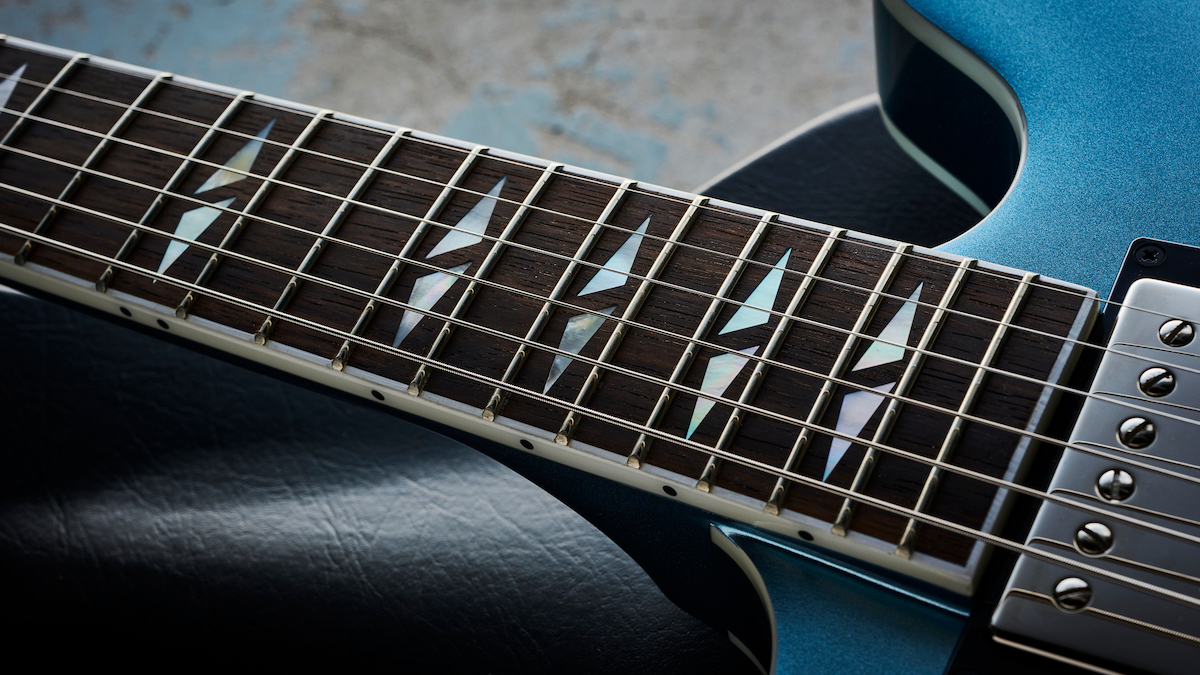
We don’t love: The Laurel fingerboard
Ok, we accept that this is the ‘affordable’ version, and savings have to come from somewhere. Clearly, a big part of those savings come from the fact that this guitar is made in China, but aside from losing its nitrocellulose finish (you weren’t expecting nitro, were you?), one of the other elephants in the spec sheet room is the fingerboard. Here, we get laurel rather than Gibson’s rosewood. Yes, it’s an Epiphone, and many of the brand’s staple models feature laurel, but there’s also plenty of ebony examples across the range too. The split-diamond inlays do remove a fairly large amount of real estate from the ’board, but no more than say, trapezoids or Custom-style blocks. It’s a small gripe - the laurel fingerboard plays very nicely and with some oil, it’ll darken down a shade or two.
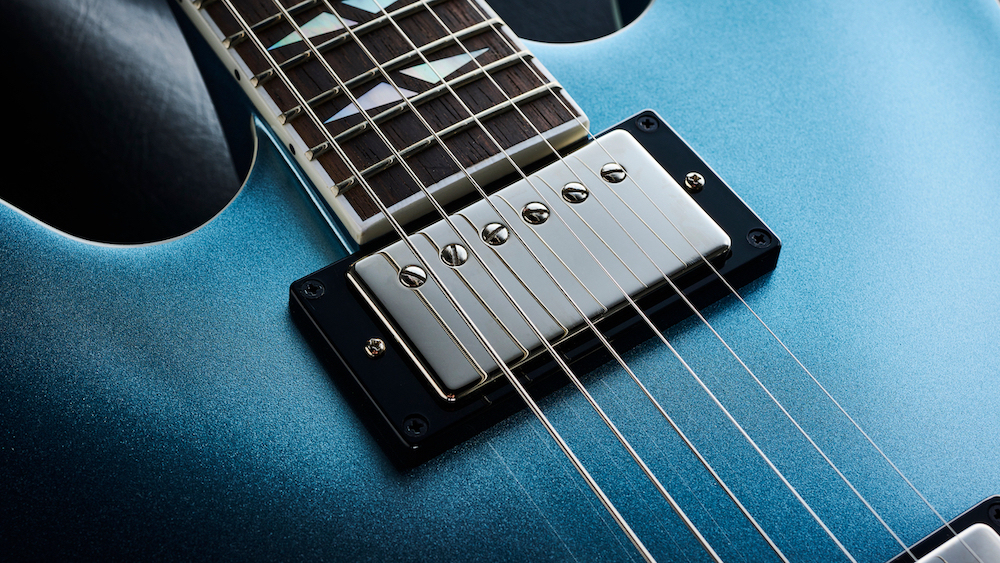
We love: The sounds
While you might think of a semi-acoustic (particularly a 335) as the vehicle of clean and slightly-driven blues, it’s important to remember that this is the guitar that helped invent rock and roll. But, this is a signature model, so our first port of call is to play some Foo Fighters riffs and see if we can dial in some sounds.
Classic Foos tones studio tones feature multiple combinations of amps, whether it’s Fender and Marshall, or Vox AC30 and the Mesa/Boogie Dual Rectifier. We set up a few different patches on our HX Stomp and the results are quite immediate. The Burstbuckers are a huge addition to this guitar, striking a great balance between aggression and P.A.F.-style smoothness. There’s a bite to the attack which is apparent when played clean, and remains under heavier distortion, but these are very much classic in their tonality. Full-sounding without becoming too flabby, the neck position is a joy for clean and crunchy sounds, and remind us that we’re playing a semi-hollow body. There’s chime and woodiness, and flipping to the bridge position this becomes more focussed with a punchier midrange and additional edge coming from the higher frequencies. It’s surprisingly easy to dial-in sounds that are close to Foos recordings, which either means that the biggest rock band in the world doesn’t think too hard about it, or Epiphone has done its job very well.
Conclusion
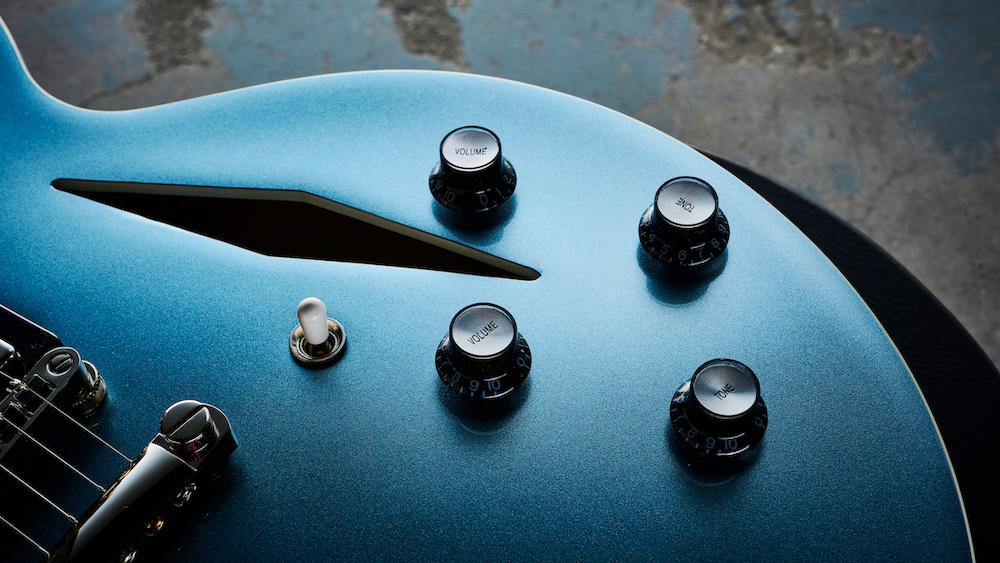
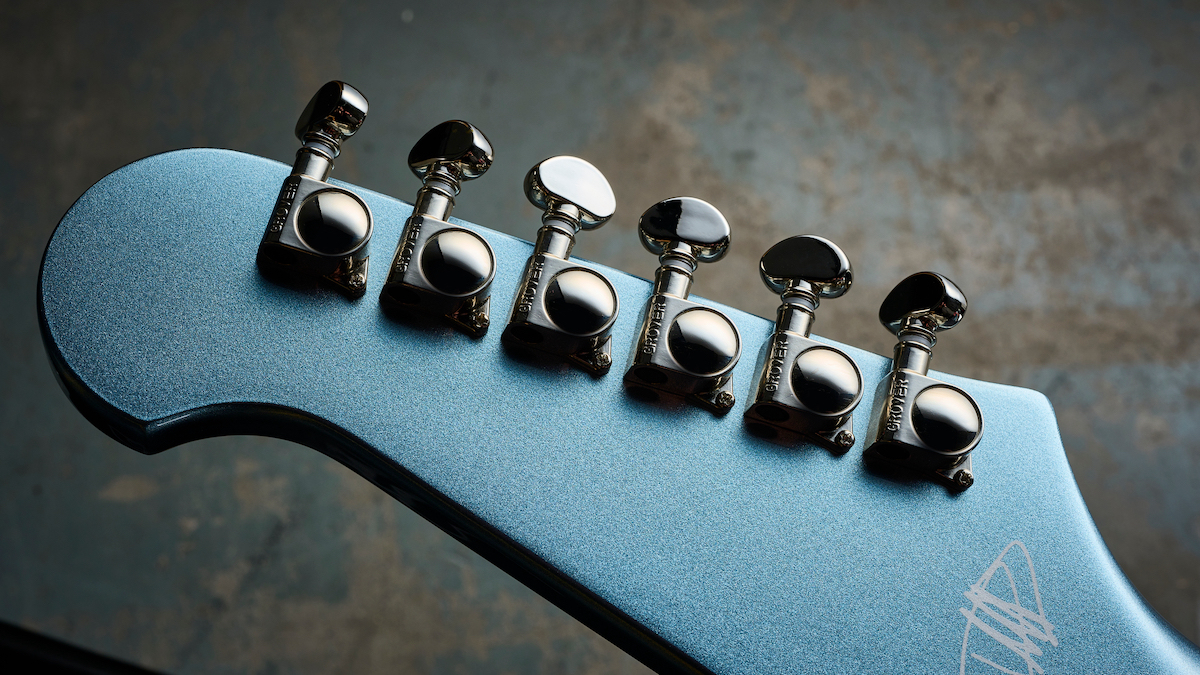
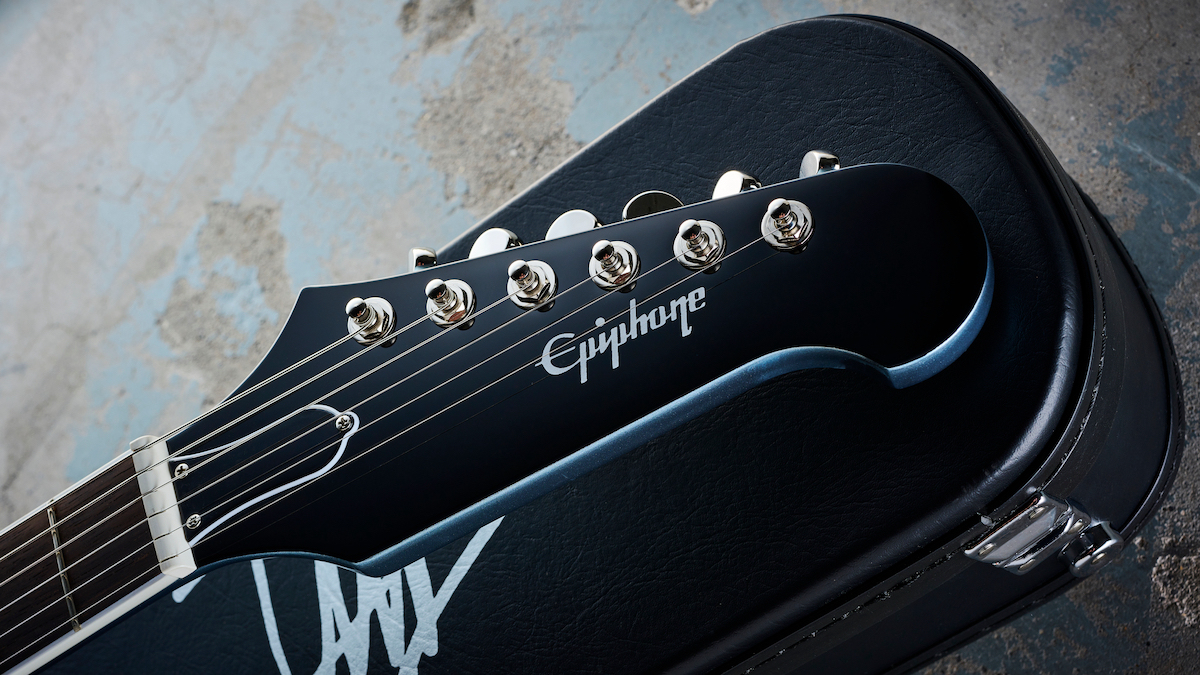
Since the Epiphone DG-335’s release, we’ve seen quite a few comments along the lines of “Looks great, but that’s expensive for an Epiphone”. But the DG isn’t alone. In the last 12-18 months we’ve seen signature models such as the Kirk Hammett Greeny, Adam Jones Les Paul Custom, Alex Lifeson Axcess and Jerry Cantrell Prophecy all reaching similar price points.
There’s global inflation to consider - things cost more now than they did two years ago, but as well as this, we can’t ignore a general uplift in quality along with price. The DG-335 is fitted with pickups that carry a retail value of around 25 percent of its price tag ($/£300). Remove these from the equation and the guitar is more in line with the Epiphone Emily Wolfe Sheraton, which also happens to be the only other Epiphone to feature the Trini-style f-holes. But to lose those would also feel like a compromise.
It would be silly to claim that the Epiphone DG-335 is every bit as good as a Memphis-made Gibson. But what Epiphone has done with this model is pretty much all we can ask for - the essence of a sought-after instrument, distilled into a more affordable guitar which means you don’t have to resort to buying a poor knock-off. It looks right - even with the laurel fingerboard - it plays very well and most importantly, it’s punching above its weight in the tone department.
The Epiphone logo on the headstock may well carry certain connotations for some people, but as we’re continuing to witness from the Epiphone stable, these aren’t reflective of the guitars the brand are currently putting out.
Let’s face it, if you want a replica of Dave Grohl’s guitar that also doubles as a very effective workhorse for any style, this is it.







